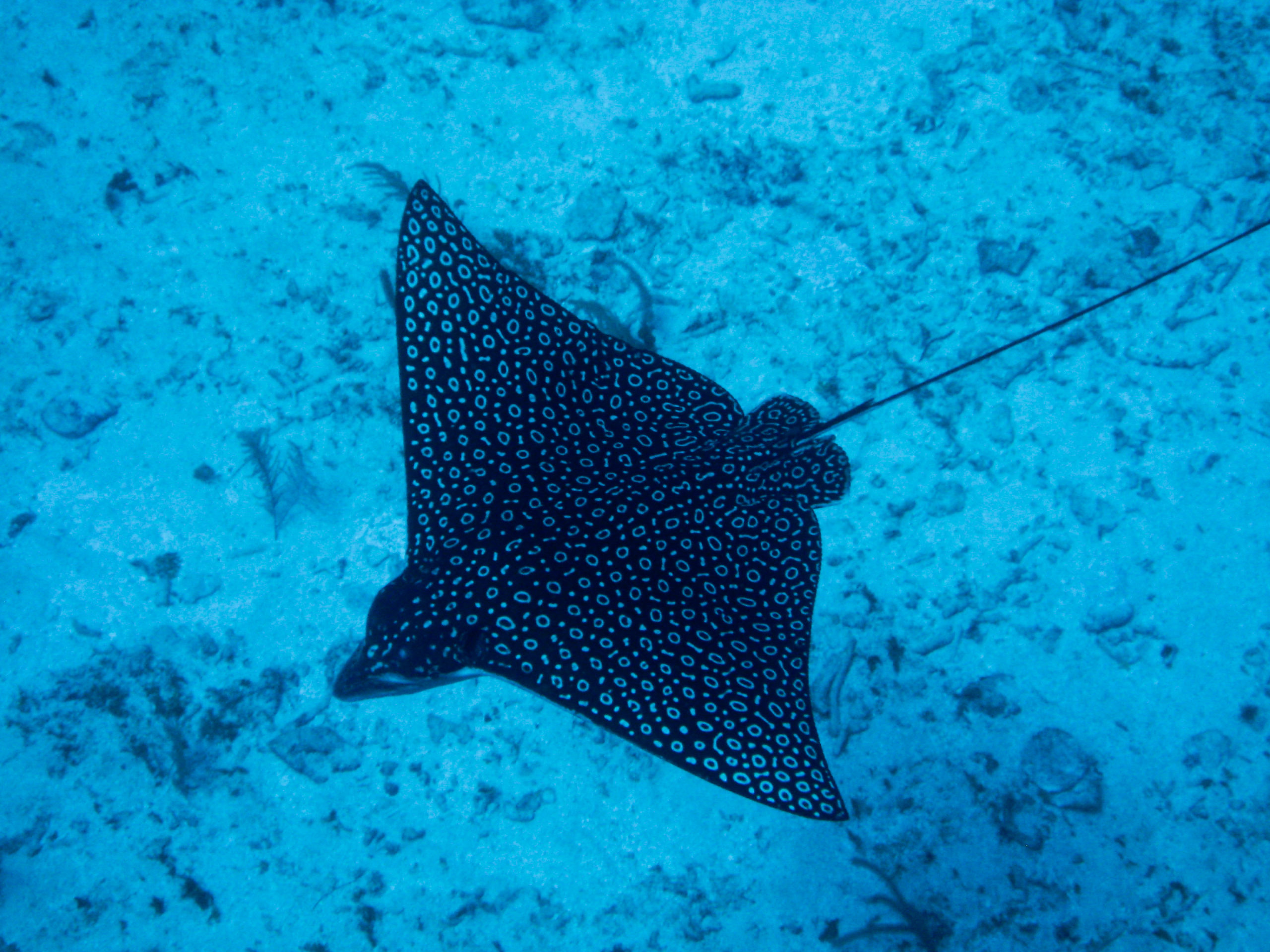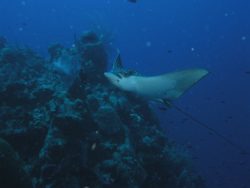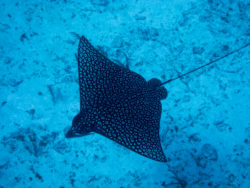
Sea Wonder: Spotted Eagle Ray
Part of the elasmobranch family, comprised of sharks, rays, skates, and sawfish, the spotted eagle ray (Aetobatus narinari) is the ocean’s second largest eagle ray, second only to mantas. This species was featured as an underwater schoolteacher in a popular kids movie about clownfish. Can you figure out which movie?
Description
Spotted eagle rays have dark blue backs covered in pearly, green, or light blue spots, making them unmistakable and easy to identify in the ocean. At the front of their bodies are their broad snout, on the bottom of which is their mouth that is perfectly positioned for feeding on their favorite prey species. Their bodies are diamond shaped and their wingspan can measure 16 feet across. Their tails are nearly three feet long and flow like a whip. Near the tail and behind the dorsal fins are short stinging spines with a barbed, venomous tip used for defense against potential threats. The body of an adult spotted eagle ray can reach nearly eight feet, not including the tail, and weigh as much as 500 pounds! Males and females are about the same size.
Diet & Habitat
Spotted eagle rays feed on benthic animals that live along the ocean floor. Clams, oysters, octopus, squid, crabs, shrimp, and urchins are all species commonly eaten by these rays. They also eat the occasional bony fish if the opportunity presents itself. The ray uses their dental plates to catch and crush their prey, separating the shell from the flesh before swallowing.
These rays live in warmer, open ocean waters of the world, preferring to be near the coastlines of each continent except for Antarctica. In the United States we find them in the Pacific, Caribbean, Atlantic, and Gulf of Mexico, and they head for coral reefs like those found near Flower Garden Banks and Florida Keys national marine sanctuaries for mating and feeding. We also see them in some of the national marine sanctuaries near Southern California.
Life History
Spotted eagle rays school in large groups and are known for leaping out of the water, which scientists think may be a behavior that helps them escape predators but the exact reason is unknown. Under the water, they are graceful swimmers that appear to effortlessly fly or glide through the ocean, which, in addition to their unique coloration, makes them a beautiful sight to see. These rays are ovoviviparous, which means they reproduce via internal fertilization, incubate the eggs internally where they hatch, and give birth to live pups. They have low reproductive potential and are pretty rare creatures which is why they are vulnerable species. There is a lot to learn about their social behavior and life history but they are tricky to research in the ocean due to their elusive nature. However, scientists can study these traits in aquarium settings where spotted eagle rays are kept and make inferences about how these rays might live and behave in the ocean. Topics of study can include lifespan, diet, social behavior, reproduction, and growth.
Threats & Conservation
Spotted eagle rays are not endangered but are considered a near-threatened species by the International Union for Conservation of Nature (IUCN) because their populations are showing patterns of decline worldwide. They are often captured as accidental bycatch and are targeted for use of their oils in nutritional supplements and alternative medicines. Additional threats to the species include habitat degradation, decreased food availability due to overfishing and ocean acidification, ocean noise, chemical and physical pollution, and climate change.

Spotted Eagle Ray in Cayman Islands. Photo: Julie Bedford

